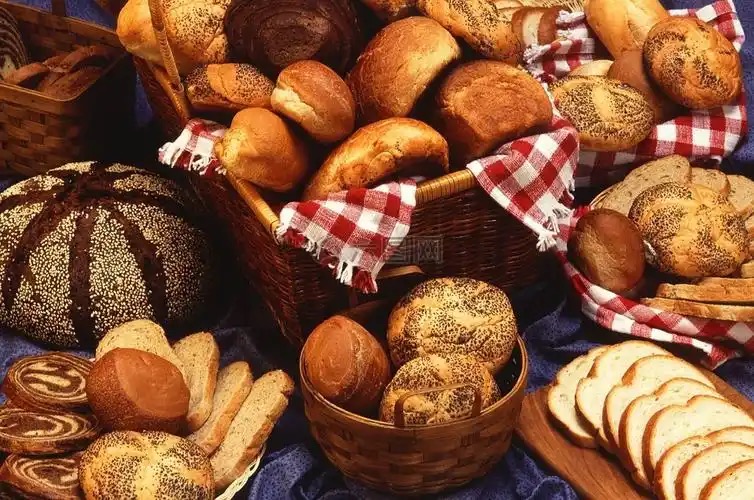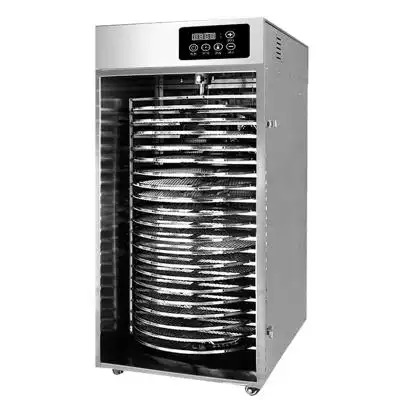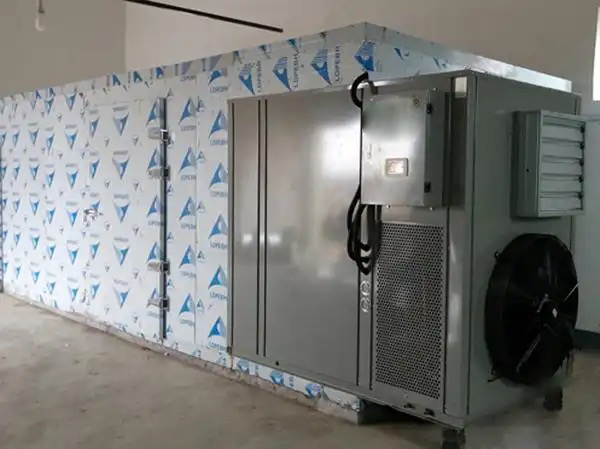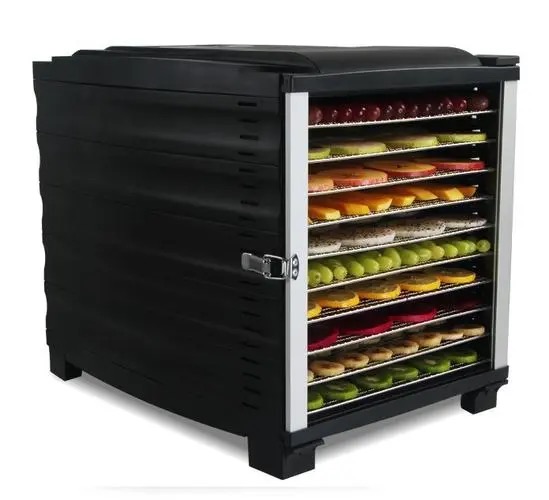
Content Menu
● Understanding Food Drying
>> Types of Food Dryers
● Key Considerations When Choosing a Food Dryer
>> 1. Energy Efficiency
>> 2. Temperature Control
>> 3. Drying Time
>> 4. Initial Investment and Operating Costs
>> 5. Maintenance Requirements
>> 6. Product Type and Quality
>> 7. Space and Size Considerations
>> 8. Environmental Impact
● Conclusion
● Frequently Asked Questions
>> 1. What is the main advantage of using a heat pump dryer for food drying?
>> 2. Can I use a condenser dryer for drying fruits and vegetables?
>> 3. How much energy can I save by using a heat pump dryer?
>> 4. What types of food are best suited for heat pump drying?
>> 5. What maintenance is required for heat pump dryers?
When it comes to food drying, the choice of equipment can significantly impact the quality, efficiency, and cost-effectiveness of the process. As a manufacturer of food drying machines in China, we understand the importance of selecting the right type of dryer for your specific needs. In this article, we will explore the differences between heat pump dryers and condenser dryers, focusing on their applications in the food industry. We will also provide insights into the factors to consider when choosing between these two types of dryers.

Understanding Food Drying
Food drying is a preservation method that removes moisture from food products, inhibiting the growth of bacteria, yeasts, and molds. This process not only extends the shelf life of food but also concentrates flavors and nutrients. Various drying methods exist, including air drying, sun drying, and mechanical drying, with the latter being the most efficient for commercial applications.
Types of Food Dryers
1. Heat Pump Dryers: These dryers utilize a heat pump system to transfer heat from the environment to the drying chamber. They are known for their energy efficiency and ability to operate at lower temperatures, which helps preserve the quality of sensitive food products.
2. Condenser Dryers: These dryers work by heating air and blowing it into the drying chamber. The moisture-laden air is then condensed and removed, allowing for continuous drying. While they are effective, they often consume more energy and can operate at higher temperatures.
Key Considerations When Choosing a Food Dryer
1. Energy Efficiency
Energy consumption is a critical factor in the operational costs of food drying. Heat pump dryers are generally more energy-efficient than condenser dryers. They recycle heat within the system, reducing the amount of energy needed to maintain the desired temperature. This efficiency can lead to significant cost savings over time, especially for large-scale operations.
For instance, a heat pump dryer can use up to 50% less energy compared to a traditional condenser dryer. This is particularly beneficial for businesses that rely on continuous drying processes, as the savings can accumulate quickly.
2. Temperature Control
The ability to control temperature is vital in food drying. Heat pump dryers can operate at lower temperatures, making them ideal for drying delicate foods such as fruits, vegetables, and herbs. This gentle drying process helps retain the nutritional value and flavor of the food. In contrast, condenser dryers may require higher temperatures, which can lead to the loss of volatile compounds and nutrients.
Maintaining optimal temperature control is essential for achieving consistent drying results. Heat pump dryers often come equipped with advanced temperature regulation systems that allow for precise adjustments, ensuring that the food is dried evenly without overheating.
3. Drying Time
The drying time can vary significantly between heat pump and condenser dryers. Heat pump dryers may take longer to dry food due to their lower operating temperatures. However, this extended drying time can be beneficial for certain products, as it allows for a more thorough drying process without compromising quality. On the other hand, condenser dryers may offer faster drying times but at the risk of affecting the final product's quality.
For example, when drying herbs, a heat pump dryer may take longer but will preserve the vibrant color and essential oils better than a condenser dryer, which might dry the herbs too quickly and lead to a loss of flavor.

4. Initial Investment and Operating Costs
When selecting a food dryer, consider both the initial investment and the long-term operating costs. Heat pump dryers typically have a higher upfront cost due to their advanced technology. However, their energy efficiency can lead to lower operating costs over time. In contrast, condenser dryers may be more affordable initially but can result in higher energy bills.
It's essential to conduct a cost-benefit analysis to determine which type of dryer will be more economical in the long run. This analysis should include not only the purchase price but also the expected energy consumption and maintenance costs.
5. Maintenance Requirements
Maintenance is an essential aspect of any food processing equipment. Heat pump dryers often require less maintenance due to their closed-loop system, which minimizes the accumulation of dust and debris. Condenser dryers, however, may need more frequent cleaning and maintenance to ensure optimal performance.
Regular maintenance tasks for heat pump dryers may include checking and cleaning filters, inspecting seals, and ensuring that the heat exchange system is functioning correctly. For condenser dryers, users should be prepared for more frequent inspections and cleaning of the condenser coils and air filters.
6. Product Type and Quality
The type of food being dried plays a significant role in the choice of dryer. For example, heat pump dryers are excellent for drying fruits and vegetables, as they preserve color, flavor, and nutrients. Conversely, condenser dryers may be more suitable for products that can withstand higher temperatures, such as grains and nuts.
Understanding the specific requirements of the food products you intend to dry will help you make a more informed decision. For instance, if you are focusing on high-value products like organic fruits, investing in a heat pump dryer may yield better quality results.
7. Space and Size Considerations
The physical space available for the dryer is another important factor. Heat pump dryers can be more compact and may fit into smaller spaces, making them ideal for facilities with limited room. Condenser dryers, while available in various sizes, may require more space for proper ventilation and operation.
When planning your facility layout, consider not only the size of the dryer but also the space needed for maintenance access and airflow. A well-planned layout can enhance operational efficiency and safety.
8. Environmental Impact
As sustainability becomes increasingly important in the food industry, the environmental impact of food drying equipment should be considered. Heat pump dryers are generally more environmentally friendly due to their lower energy consumption and reduced carbon footprint. Choosing energy-efficient equipment can contribute to a more sustainable operation.
Additionally, many heat pump dryers are designed with eco-friendly refrigerants, further minimizing their environmental impact. By selecting equipment that aligns with sustainability goals, businesses can enhance their brand reputation and appeal to environmentally conscious consumers.
Conclusion
Choosing the right food dryer is crucial for ensuring the quality and efficiency of your food drying process. Both heat pump and condenser dryers have their advantages and disadvantages, and the best choice will depend on your specific needs, budget, and the types of food you plan to dry. By considering factors such as energy efficiency, temperature control, drying time, and maintenance requirements, you can make an informed decision that will benefit your business in the long run.

Frequently Asked Questions
1. What is the main advantage of using a heat pump dryer for food drying?
The main advantage is energy efficiency, as heat pump dryers recycle heat and operate at lower temperatures, preserving the quality of the food.
2. Can I use a condenser dryer for drying fruits and vegetables?
Yes, but it may not preserve the flavor and nutrients as effectively as a heat pump dryer due to higher operating temperatures.
3. How much energy can I save by using a heat pump dryer?
While savings vary, heat pump dryers can reduce energy consumption by up to 50% compared to traditional dryers.
4. What types of food are best suited for heat pump drying?
Heat pump dryers are ideal for delicate foods such as fruits, vegetables, herbs, and even some meats.
5. What maintenance is required for heat pump dryers?
Maintenance is minimal, typically involving regular cleaning of filters and ensuring proper airflow.
By carefully evaluating these factors and understanding the unique benefits of each type of dryer, you can select the best equipment for your food drying needs, ensuring high-quality products and efficient operations.












